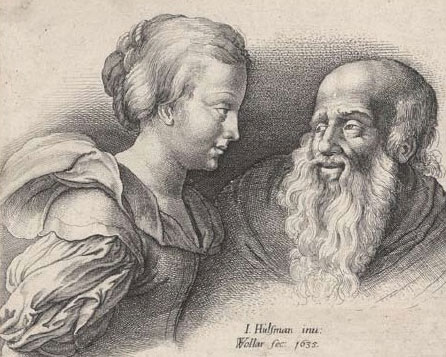- Relief printing
- Intaglio and planographic printing
- Color printing
- Bits and pieces
- Early photography in silver
- Non-silver processes
- Modern photography
- Color notes
- Color photography
- Photography in ink: relief and intaglio printing
- Photography in ink: planographic printing
- Digital processes
- Where do we go from here?
Etching

Etching with aquatint. Adriaen Van Ostade. The Family. 1647. 7 1/8 x 6 1/4" (18.1 x 15.9 cm). The Museum of Modern Art, New York. Gift of Richard Benson. This impression is a late one, made after the artist’s death. The copper plate from which it was printed was worn, and some aquatint was added to strengthen the image.
Etching was a remarkable technical breakthrough in intaglio printing. It had been known for many years that some acids could dissolve metal, and that some waxy materials could be applied to the metal surface to resist the acid and so produce etched designs. This technique had long been used in metalwork having no connection whatever to printing. At some point, probably in the 1500s, the idea of etching through a resist was applied to intaglio printing. The technique itself is simple. If a copper plate (of the same kind used for engraving) is coated with a thin layer of soft wax, an artist can draw through the wax with a sharp needle.

Etching. Johann Hulsman. The Elder and the Maiden. c. 1634 (Printed by Wenceslaus Hollar, 1635). 4 x 4 3/4" (10.2 x 12.1 cm). The Museum of Modern Art, New York. Gift of Richard Benson. The linear net used to emulate tone in the woodcut shows up in engravings and etchings as delicate cross-hatching.
If the plate is then placed in an acid bath, the lines bared by the needle will be etched into it while those areas protected by the wax will remain intact. The etched lines will be rougher than the smooth grooves cut by the burin, but they will hold ink and be printable. Etching transformed intaglio printing. The older method of hand engraving had been a predominantly reproductive medium. It was so hard to do, and required so much skill, that a class of engravers evolved who were not artists but craftsmen concerned only with reproducing the work of painters. Etching allowed artists to apply linear designs to a copper plate themselves, with the same ease with which they might draw on paper.
Little pressure was needed to make the needle move freely through the resist. Once a plate was etched and the resist removed, further work could be done on the plate by using the needle to draw with more pressure, raising burrs capable of holding ink. This technique, called “drypoint,” did not require etching, and allowed the artist to do rapid work that could be seen on a proof print without the delay necessitated by an additional etching stage. Etching and drypoint produced prints with a different character from the older, more restrained forms of reproductive copper engraving. Almost as soon as etching was developed, engravers began to use it to help them make their hand-cut plates; many prints combine both methods. In some etchings we'll see the lines have the nervous quality of the hand rather than the stiff appearance of the burin meeting intransigent copper. When engravings were printed, the inked plates were wiped so thoroughly that the background was absolutely clean. When etching came along things became more casual, and sometimes the printer would leave ink on the plate surface, to add to the tonality of the print.

